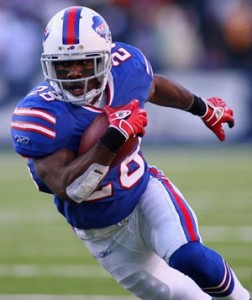This week at the New York Times I looked at some record-breaking performances from week 16.
Sunday was a record-setting day in the N.F.L. In case you missed it …
- The rookie Minnesota Vikings kicker Blair Walsh connected on a 56-yard field goal in the second quarter against the Texans, making him the first kicker with nine field goals of 50 yards or longer in a season. Even more impressive: Walsh is 9 of 9 from 50-plus yards this year.
- Kansas City rushed for 352 yards against the Colts, easily breaking the record for rushing yards gained in a losing effort and also for rushing yards differential in a loss. How do you lose when you rush for so many yards? Brady Quinn threw an interception that was returned for a touchdown and threw another pick in the Colts’ end zone. Another Chiefs drive ended on a fumble inside the Colts’ 20-yard-line. But the turning point of the game may have been when Quinn was stuffed on a fourth-and-1, one of the few times in the game that the Colts’ run defense won the battle at the line of scrimmage.
- In the same game, Jamaal Charles recorded the 750th carry of his career, giving him enough rushing attempts to be eligible for the career yards-per-carry title. Jim Brown averaged 5.22 yards per carry during his Browns career. That’s now second highest among running backs in N.F.L. history. Charles has a mind-boggling 5.82 average gain over his five-year career.
- Brown might take a back seat to another running back this season. Buffalo’s C.J. Spiller has averaged 6.48 yards per carry this year on 183 carries, the highest single-season average of any player with that many carries. The previous record holder was Brown, who averaged 6.40 yards per rush in 1963.
- It’s been another remarkable season for Atlanta’s Tony Gonzalez, but he actually was nudged out of the record books this weekend. In 2004, Gonzalez set the single-season record for receptions by a tight end with 102, but Dallas’s Jason Witten caught his 103rd pass of the season in overtime against the Saints on Sunday.
- The Seattle Seahawks have outscored their last three opponents, 150-30. That 120-point margin of victory is the largest differential in a three-game span in 70 years. In 1942, the Chicago Bears won three straight games and did it with a combined 127-7 score; the year before, Chicago outscored its opponents, 136-14, over a three-game stretch.
Mega Record for Megatron
Of course, the most noteworthy individual record to fall this past weekend was Jerry Rice’s single-season receiving record of 1,848 yards. Calvin Johnson needed only 15 games to break the record Saturday night, and with 1,892 yards, he has a good chance of becoming the first N.F.L. receiver to hit the 2,000-yard mark.
With 225 yards against the Falcons, he also became the first player to gain 100 receiving yards in eight straight games and to collect 10 receptions in four straight games. For Johnson, it was his fifth career game (including the postseason) with at least 200 receiving yards, tying him with Lance Alworth and Rice for the most 200-yard games since 1960.
Detroit has averaged 47 pass attempts per game, and will set the single-season record for attempts on its 12th pass attempt Sunday. Most of those passes have come from the right arm of Matthew Stafford, who threw 663 passes in 2011, (now) the fourth-highest number ever. On his seventh pass in Week 17 against the Bears, he’ll set the record, and he needs just 15 passes to become the first quarterback with 700 pass attempts in a season.
You can check out the full post here.

